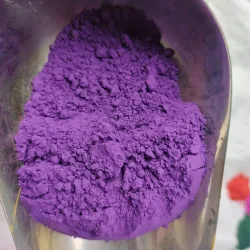How to Choose the Right Paint Pigment for Your Art
2024-08-12
Introduction
Choosing the right paint pigment can be the difference between a masterpiece and a muddled mess. With so many options available, from earthy ochres to synthetic marvels, it can be overwhelming to know where to start. In this post, we'll guide you through the process of selecting the perfect pigments for your artistic needs.
Understanding the Basics
Before diving into specific pigments, it’s essential to understand a few key terms:
- Hue: This is the basic color of the pigment, such as red, blue, or yellow.
- Value: This refers to the lightness or darkness of a color.
- Chroma: This describes the purity or intensity of a color. High-chroma colors are vivid, while low-chroma colors are muted.
Choosing Pigments Based on Your Medium
Different art mediums require different types of pigments. Here’s a quick guide:
- Acrylic Paints: These are versatile and can accommodate both natural and synthetic pigments. Acrylics dry quickly, so choose pigments that maintain their color intensity as they dry.
- Oil Paints: Oil paints allow for rich, deep colors and a wide range of hues. However, they require pigments that mix well and maintain their stability over time. Traditional pigments like cadmium and cobalt are popular for their brilliance.
- Watercolors: Watercolor pigments need to be transparent and easily blendable. Look for pigments that are finely ground and can produce delicate washes without losing their vibrancy.
Color Mixing Tips
When mixing colors, start with a limited palette of primary colors (red, blue, yellow) and add secondary and tertiary colors as needed. This helps maintain color harmony and prevents your palette from becoming too muddy. Remember, it’s easier to darken a color than to lighten it, so start with lighter tones.
Consider Lightfastness
Lightfastness refers to how resistant a pigment is to fading when exposed to light. If you want your artwork to stand the test of time, choose pigments with high lightfastness ratings. Most reputable paint manufacturers provide this information on their products.
Ethical and Environmental Considerations
Some traditional pigments, like lead white, have been phased out due to their toxicity. When choosing pigments, consider the environmental and ethical implications. Many artists are now opting for eco-friendly and non-toxic pigments to reduce their environmental impact.
Conclusion
Selecting the right paint pigment is a personal and artistic choice that can significantly impact the outcome of your work. By understanding the properties of different pigments and considering your medium, mixing techniques, and ethical preferences, you can create art that not only looks beautiful but also stands the test of time.



